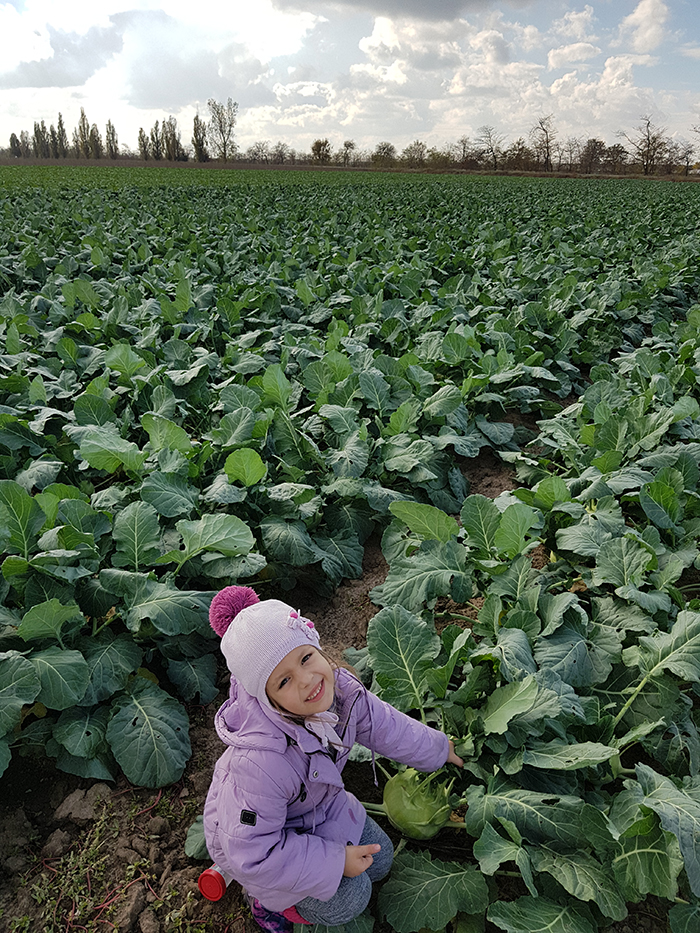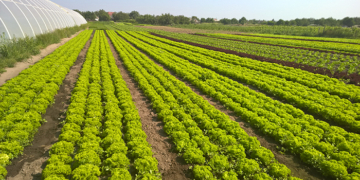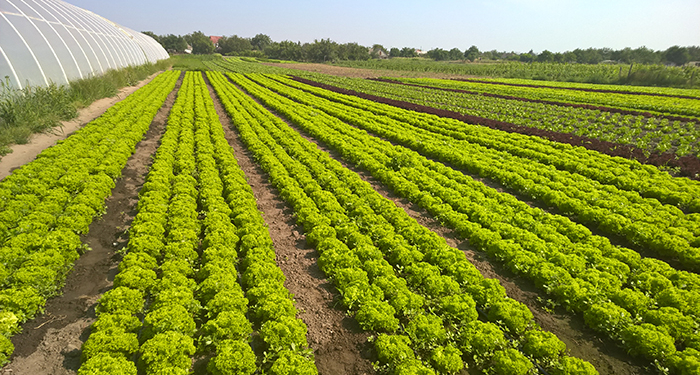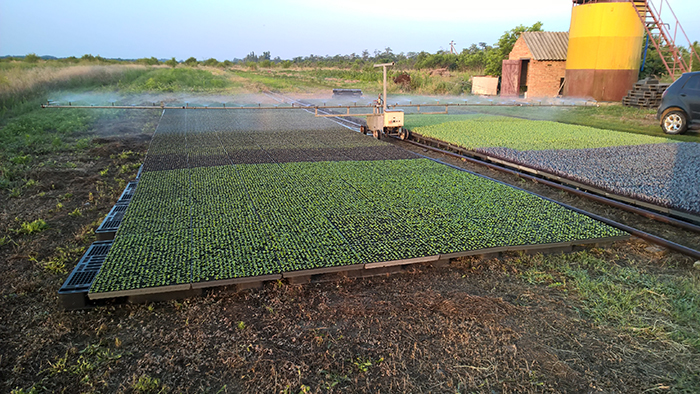Peking and brussels cabbage sprouts, kohlrabi, radicchio, celery, artichoke, mint, basil, tarragon, fennel, asparagus – and this is by no means a complete list of crops grown annually by farmer Alexander Kishchenko within the village of Nova Zburievka in the Kherson region. . According to him, some of these crops are the main ones, ie the ones that bring the most profit, while others can be called auxiliary, they are needed for the range. Because customers order them infrequently and in small quantities, so you can’t make money on them.
Although it is not easy to do commerce on the main crops, the farmer notes. What are the consequences of last year’s quarantine, when it was not possible to sell some of the early products, it just had to be thrown away. So in the short term we had to reorient to another category of customers. In the case of Oleksandr Kishchenko, from the subjects of the hotel and restaurant industry to trade networks and processing enterprises. This prompted the farmer to reconsider both the range and the partnership with some suppliers of seeds, fertilizers, PPE, the prices of which, despite the difficulties, are creeping relentlessly. There is nothing you can do, this is life, everything flows and changes quickly. But Oleksandr Kishchenko has not stopped cooperating with one company for three decades, despite the changing market conditions. It’s about Bejo Zaden. After all, the potential of selection achievements of this famous brand is limitless, says an experienced farmer.
Bejo Zaden got acquainted with the products more than twenty years ago, when, having received the profession of a designer of electronic equipment, he started farming – he could not find a well-paid job in the specialty, – recalls Alexander Kishchenko. – Together with their partners, they started growing tomatoes on leased land in the village of Nova Zbur’ivka, Kherson region. Then they became interested in Beijing cabbage, the charms of which were not yet known in Ukraine, while in Poland and other Western European countries it was already a popular culture. Began to experiment with hybrids of different companies. The most suitable for us was the hybrid Protein F1 selection Bejo Zaden. By the way, it still occupies a prominent place in our cabbage field. And acquaintance with this hybrid laid a solid foundation for mutually beneficial, fruitful long-term cooperation with the Ukrainian representative Bejo Zaden – LLC “Beyo Ukraine”, which now supplies us with the highest quality seeds of Brussels sprouts and kohlrabi, celery root and petiole, a variety of chicory – radicchio. These crops provide a crop of reference quality, I can confidently call them the hallmark of the brand “FreshKO”, which I recently founded.
According to Oleksandr Kishchenko, FreshKO products, which have about forty product items, were intended for the HoReCa segment in the cities with a population of millions – Kyiv, Odesa, Kharkiv and Lviv. However, life, or rather the pandemic, has made its adjustments. And now vegetable crops grown by FreshKO can be purchased not only in bulk, but also at retail at the Nezhdany agricultural market in the village of Velyki Kopani in the Kherson region. Although Alexander Kishchenko plans to grow at least half of the crop to order from regular customers.Qualitative indicators of harvest, which are provided by our experience of cultivation and Bejo Zaden seeds, allow not to reduce the price of finished products and to remain the highly competitive player in the market even in difficult times, – Alexander Kishchenko emphasizes. – For example, if once Peking cabbage in the Kherson region was consumed only by Koreans, because they prepared traditional dishes from this vegetable, now, including due to the emergence of such a successful hybrid as Squirrel F1, Peking cabbage, especially in season, is consumed by all nationalities who live in Ukraine. This vegetable is becoming no less popular with consumers than white cabbage, which has long held the palm of supremacy.

When asked what BilkoF1 liked so much, Oleksandr Kishchenko answered without hesitation: the expected shelf life without loss of quality – at least four months, unsurpassed appearance and taste. Therefore, almost the largest plot of 10–12 ha is allocated annually under Protein F1 in the farm. They would grow even more, the farmer notes, because there will always be buyers for such products, but the storage capacity at FreshKO is not unlimited.
In addition to Protein F1, the farm also grows Manoko F1. The only difference is that not for winter storage, but to get an early harvest of Chinese cabbage.
All crops in “FreshKO” are grown through seedlings, so the farm has a film greenhouse of the Hungarian type, equipped with a heated floor and hydroponic equipment. Distillation of sprouts continues in the greenhouse, some green cultures are grown, and in the summer – tall hybrids of sweet pepper.
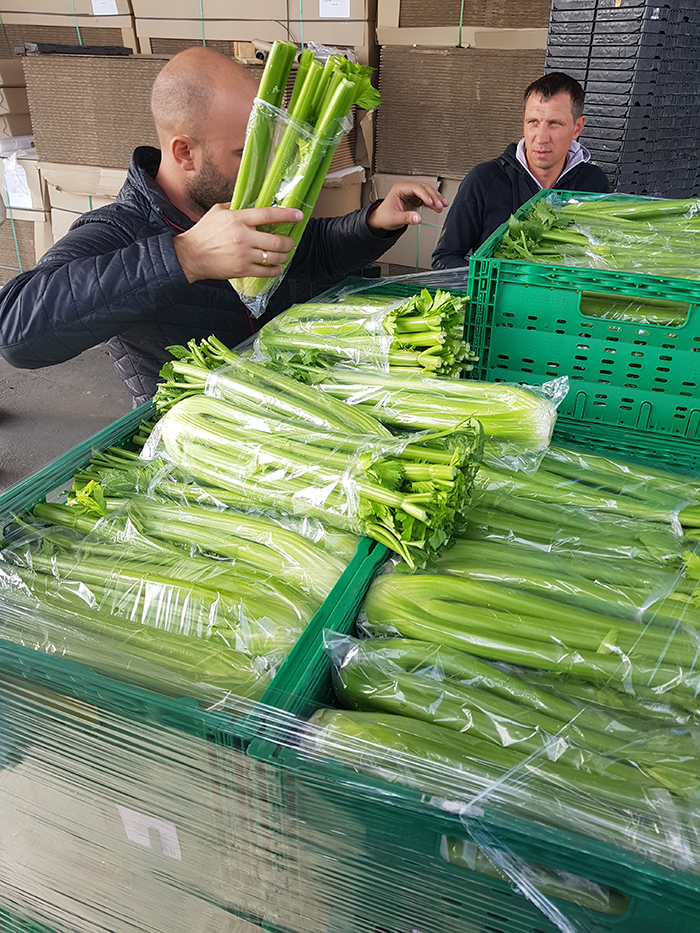
According to Oleksandr Kishchenko, Bejo Zaden is the undisputed leader in the segment of celery. After all, the juiciness of the Tango F1 hybrid is higher than any applause. Which is very impressive for supporters of healthy eating, who use extremely useful celery for the preparation of fresh juices and smoothies, which add more apples and carrots. Also, antioxidants contained in celery are used by athletes in their diet. Buyers also voted for their own wallet for Ilona F1 root celery of Bejo Zaden selection. According to Alexander Kishchenko, the evenness and homogeneity of the roots of this hybrid will impress even an experienced farmer. And the Diamond variety, which was in the lead in the FreshKO fields before the appearance of Ilona F1, is one of the most high-yielding and unpretentious root celery plants on the Ukrainian market. Although this crop is not considered easy to grow, Diamond and Ilona F1, provided the technology is provided, will provide a decent harvest even for amateur vegetable growers. At least, as Oleksandr Kishchenko assured, he never lacked buyers of celery. Because a farmer trained in his own mistakes has vowed to save on seeds, which usually leads to lower prices for the finished product.
The situation is the same with Brussels sprouts. According to Oleksandr Kishchenko, no other company, except Bejo Zaden, has been able to provide such a natural green shade of cobs than the one present in the Franklin F1 hybrid. It is attractive and tastes good. With the size of the breeders also got “in the apple”. Franklin F1 heads are neither too big nor too small, exactly what customers would like to see.
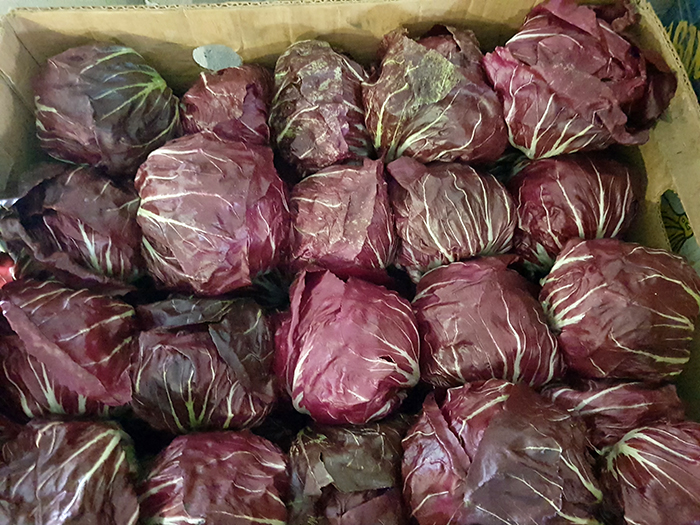
Despite the fact that Brussels sprouts were grown in Ukraine in Soviet times, this culture has not become very popular in the everyday cuisine of Ukrainians. But there is a layer of people who adore this product. And they meticulously choose their favorite vegetable. Therefore, in order to successfully sell Brussels sprouts, it must be ideal in all respects, as well as plastic to different growing conditions, so that the cost of its production does not exceed the profits from the sale of finished products. And Franklin F1 is the best fit for the role. In addition, this hybrid is resistant to droughts, which have become more frequent in the Kherson region, – said Alexander Kishchenko.
According to the owner, it is enough for two hectares to provide the range and demand for Brussels sprouts from regular customers, who are also accustomed to the high level of quality provided by Franklin F1. Harvest dates are in late December – early January, because the crop can easily withstand frosts down to – 12 ° C. However, in winter it is better to move it to storage to avoid the consequences of weather surprises. When working with Brussels sprouts, keep in mind that the peak of product sales only lasts until the early season vegetables start to appear on the market, so you don’t have to wait too long for the best price, taking advantage of Brussels sprouts for long-term storage. It is better to bet on its quality.
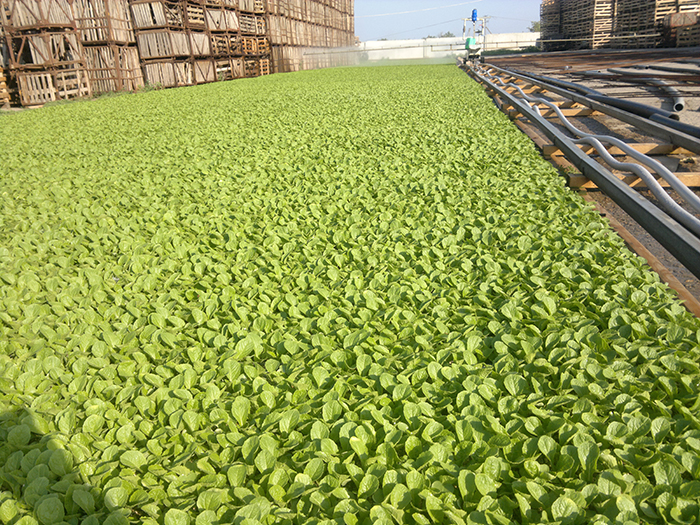
Given the regional peculiarities of gastronomic preferences, Odessa is the biggest gourmet in Ukraine, – continues the story of Alexander Kishchenko. – The number of exotic vegetables sold there is the highest. Evidently, the ethnic diversity of the local population is evident, as well as the traditional connection with the sea routes, which significantly pushes the scope of traditional notions of food. So, say, we have the most spicy and aromatic herbs, artichokes, asparagus and kohlrabi ordered from Odessa.
As for kohlrabi, no one prepares as many different dishes from this variety of cabbage as the inhabitants of Odessa. They are being overtaken only by the people of Lviv, as the preferences of the latter are influenced by the geographical proximity to the countries of Western Europe, where kohlrabi is almost more popular than potatoes. Among the most popular hybrids of this culture, Alexander Kishchenko called Benefit F1, because, according to his observations, Ukrainians are better off buying greenish fruits than purple. Plus, the F1 Fruit tastes a little sweet with unobtrusive radish notes that you can’t help but like. In “FreshKO” the area under kohlrabi is equal to two hectares, agrotechnics almost does not differ from cultivation of white cabbage, by the way, they have common pests and diseases. Recently, retailers from the Kherson region became interested in kohlrabi, artichoke and fennel, which signals an increase in demand for these niche products.
Alexander Kishchenko is convinced that asparagus is also a very promising crop in our area. Therefore, he created an experimental site where 80% of the plantations are hybrids of asparagus Bejo Zaden. They provide the most stable results and demonstrate maximum cold resistance and early maturity of plants.

Another cold-resistant crop, a variety of chicory salad – radicchio, has recently settled in the beds “FreshKO”. According to Oleksandr Kishchenko, despite the offers of other companies on the Ukrainian market, only varieties of radicchio from Bejo Zaden are worth paying attention to. In general, “FreshKO” can be called a pioneer in the cultivation and promotion of radicchio on the market. Even at Nezhdany, where it is difficult to surprise customers with new products, radios are almost unnoticed, as they used to be, because they are not used to using this culture. However, some of the compatriots who have returned from Western Europe for work or travel, where radicchio is widespread, are happy to add the leaves of this chicory to salads, realizing the health benefits of such mixes.
Olexander Kishchenko’s acquaintance with radicchio in the field is eight years. According to the farmer, there are many nuances of growing crops that can be learned only in practice. Therefore, not every vegetable grower will be able to get a decent harvest at once. The culture is sensitive to irrigation and trace elements such as magnesium and boron. The best choice is the Indigo and Leonardo varieties from Bejo Zaden.
By the way, FreshKO has mastered the technology of not only growing radicchio, but also storage, although it is believed that the culture after harvest is almost non-existent. Therefore, some farmers even leave it in the field, where small frosts have a positive effect on the taste of radicchio heads – their natural bitterness is replaced by a sweet-starchy taste. But Oleksandr Kishchenko does not advise to do it, because after freezing radicchio leaves can lose their marketable appearance and fade. The most effective will be to harvest Indigo and Leonardo in early winter, and in the vegetable store it will last until February. The taste of this salad chicory will also improve significantly, but without risk to the whole party.
